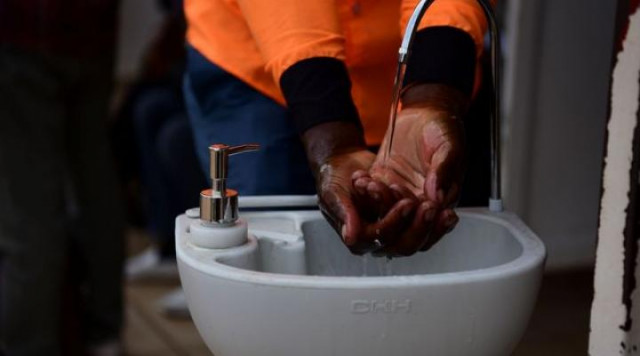How many wash hands with soap?
How much is it actually used for washing hands with soap, the so-called outcome, is anybody’s guess

A Reuters representational image.
Hand-washing tools also played a key role in responding to Ebola virus. “SAVE LIVES: Clean Your Hands” is campaigned on 5 May every year. This year’s campaign will focus on the crucial contribution of nurses and midwives. Some 424 hospitals and healthcare facilities from Pakistan have registered for the campaign.
While the call to nurses is “Clean and safe care starts with you”, the advocacy line for the ordinary folks is “Safer care for you, with you”. Most of our opinion leaders would agree and reiterate that we, the Muslims, wash our hands five times a day. For this to happen cent per cent, though, the number of mosques would have to be ten times more. And these are only men. For women, the less said, the better. No surprise then that all estimates of the burden of disease point in the opposite direction. The latest results of an official survey give some idea, for the first time, of how many of us wash hands with soap. The eleventh round of Pakistan Social and Living Standard Measurement (PSLM) & Household Integrated Economic Survey (HIES), 2018-19 is out. Generally used for the measurement of poverty, an industry that has already sprung into action, forgetting that the survey has an in-built bias towards poverty reduction to prove the point of donors who funded the exercise and their local cohorts (No marks for guessing Who is Who!). Be that as it may, the more interesting part for us is what it reveals on hand washing.
As the field activities of the latest round of the survey are spread over the period from August 2018 to June 2019, we cannot expect it to reflect the impact of the appeals for hands washing made to the public from the highest levels of the state, political, community and professional leadership, and the relentless media campaign. In an attempt to fulfil the new data requirements to report on SDGs, the questionnaire was expanded to include new indicators such as hand washing. Better believe it. As per the survey, only 50 per cent of the households reported a specific place of hand washing with soap and water. Not unexpectedly, Punjab was ahead of all provinces, with a tally of 53 per cent. And, expectedly, the worst case was that of rural Sindh, with a bare 13 per cent of the households enjoying a specific place of hand washing with soap and water. Now this is what economists call an output indicator, implying the availability of a physical facility. How much is it actually used for washing hands with soap, the so-called outcome, is anybody’s guess. This presents an alarming picture. Worse, in the Rs1.2 trillion relief package announced to combat the Covid-19 pandemic, there is no provision for the first line of defence — hand washing.
Published in The Express Tribune, April 24th, 2020.
Like Opinion & Editorial on Facebook, follow @ETOpEd on Twitter to receive all updates on all our daily pieces.












COMMENTS
Comments are moderated and generally will be posted if they are on-topic and not abusive.
For more information, please see our Comments FAQ